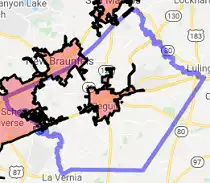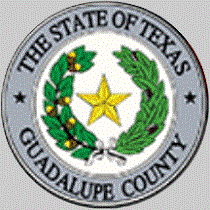Loading Data
Find USDA Eligible Properties in Guadalupe County
 browse list of realtors working in Guadalupe County
browse list of realtors working in Guadalupe County
Guadalupe county has 2 usdaproperties.com realtors ready to help with your search!
| April Featured Agents | |
|---|---|
| Steven Garza | from EXP Realty, LLC |
| Delanna Allen | from RE/MAX First Shot |
Looking to buy in Guadalupe County, Texas?
There are 366 USDA backed residential loans in Guadalupe county with an average loan balance of $156,713. Over 81% of the loans helped first time home buyers. Borrowers were an average age of 39 years old. The typical appraised home value was around $157,682. On average the rural home size purchased with this loan was approximately 1,882 SqFt. Guadalupe county applies the standard USDA income limits to determine loan eligibility. For a household of upto 4 people the income limit is $90,300. For a household of between 5 and 8 people the income limit is increased to $119,200.
The size of Guadalupe County is roughly 1,850 square kilometers. USDA defined regions of rural loan ineligibility in Guadalupe cover 214 square kilometers of the county. Approximately 11.6% of Guadalupe County is ineligible for traditional USDA home loans. The influence score for Guadalupe County is 1. Look below for the interactive county level map illustration below for more details.
Select from the list of cities below or use the search feature to find active property listings in a city where you would like to live.
Start your search for USDA loan eligible properties in the cities of Guadalupe County, TX ![]()
* cities most likely to have USDA loan eligible properties for sale.
Barbarosa • Camp Willow • Cibolo • Clear Springs • Galle • *Geronimo • *Kingsbury • *Lake Dunlap • *Marion • *McQueeney • *New Berlin • *Redwood • *Santa Clara • Schertz • Schumannsville • Seguin • *Staples • Zorn • *Zuehl
A USDA loan is a mortgage option available to eligible homebuyers that is sponsored by the United States Department of Agriculture to promote homeownership in rural communities. USDA Loans, sometimes called "RD Loans," offer 100% financing options on eligible rural properties. USDAProperties can help you find USDA properties in Guadalupe County.
View the detailed USDA boundaries and read about general conditions of
Guadalupe County, Texas
 .
.Guadalupe County is located in the great state of Texas and was founded on March 30, 1846. It is named after the Guadalupe River, which flows through the county from west to east. The county seat is Seguin, a city with a rich history of its own.
Before the arrival of Europeans, the region was inhabited by various Native American tribes, including the Tonkawa, Karankawa, and Lipan Apache. Spaniards first explored the area in the late 17th century, and by the 18th century, the Spanish had established missions and small settlements along the Guadalupe River. In the early 19th century, the area was part of Mexican Texas, and after Mexico gained independence from Spain in 1821, it was included in the Mexican state of Coahuila y Tejas.
Guadalupe County was officially established after the annexation of Texas by the United States in 1845. The county has grown steadily in population and economic development since then. Agriculture, manufacturing, and service industries have played a significant role in the region's growth. Several cities and towns dot the landscape, including Cibolo, Schertz, and Selma among others.
A fun fact about Guadalupe County is that Seguin, its county seat, is home to the world's largest pecan, a 2,500-pound sculpture made of concrete and steel. The sculpture is a nod to the area's rich history of pecan farming and serves as a unique local landmark. Additionally, Sebastopol House State Historic Site, located in Seguin, is a well-preserved example of a limecrete building - a construction method used in the mid-19th century that made use of limestone and concrete for building.
Featured Cities of Texas







